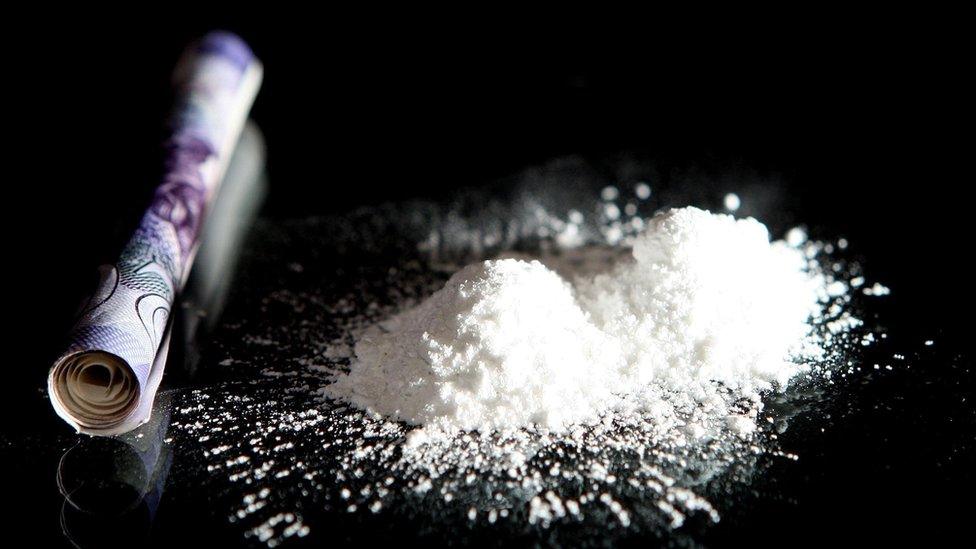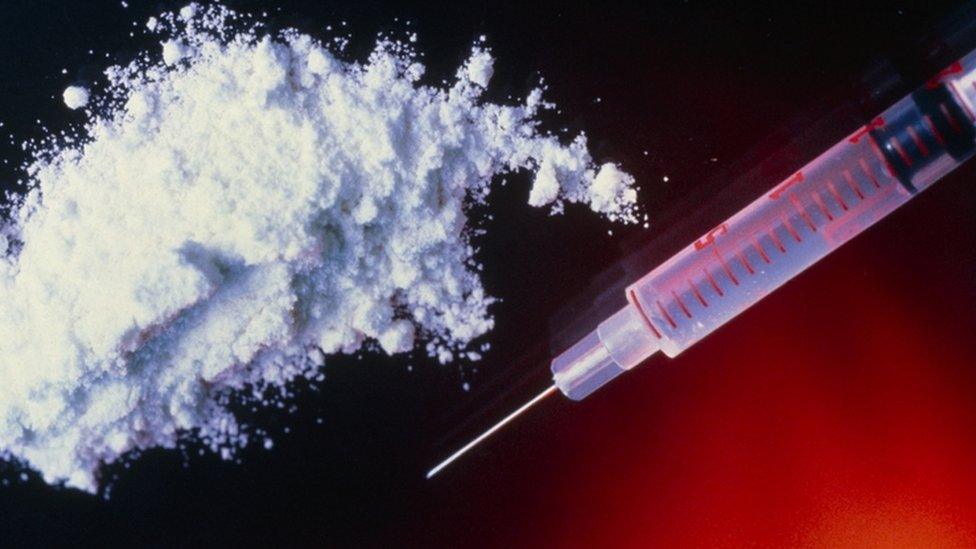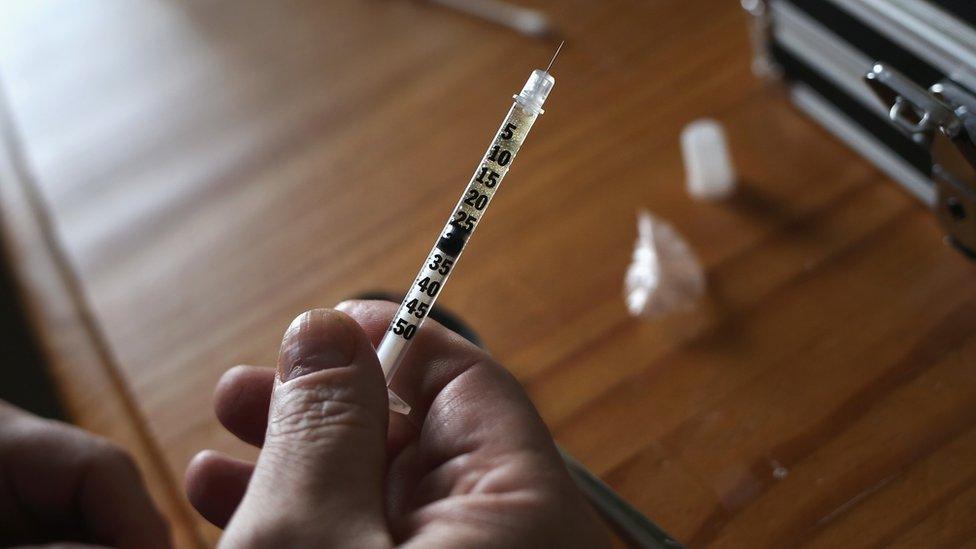Drug deaths: Cocaine contributes to record number
- Published

More than two-thirds of last year's drug-related deaths were due to the misuse of drugs, the ONS said
The number of drug poisoning deaths reached record levels in England and Wales last year, official data shows.
Deaths involving cocaine rose by 16% to 371, while overall there were 3,744 deaths from legal and illegal drugs.
The Office for National Statistics said it was the highest number of deaths since comparable records began in 1993.
The ONS data, external showed that those in their 40s have overtaken people in their 30s as being the age group with the highest mortality rate from drug misuse.
Of the deaths, more than two-thirds were due to misuse of drugs, and two-thirds of the deaths were men - in line with previous years.
Pure cocaine
The majority of fatalities linked to cocaine use occurred in men aged 30 to 49, the figures show.
Rising levels in the purity of cocaine could be one explanation for the increase, statisticians said.
The ONS report said: "The National Crime Agency reports that there was a significant increase in both crack and powder cocaine purity at all levels in 2016, including user-level, which may partly explain the increase in deaths relating to cocaine."
Niamh Eastwood, executive director of the drugs charity Release, called on the government to fund the forensic testing of drugs, including at nightclubs and music festivals, so that people can be better informed of the purity and content of any pills or powder that they are taking.
She said: "They must also consider reforming the laws so that people who use drugs are not treated as criminals, this acts as a barrier to seeking help. Harm reduction initiatives are the only way we can stem the flow of young people dying."

New psychoactive substances (NPS), formerly known as legal highs, mimic other drugs
ONS statistics showed there were also rises in deaths involving the powerful painkiller fentanyl - from 34 in 2015 to 58 in 2016, paracetamol - from 197 to 219, and new psychoactive substances (NPS) from 114 to 123.
NPS typically mimic "traditional" drugs such as cocaine, cannabis and ecstasy, and were widely known as "legal highs" before laws criminalising their production, distribution, sale and supply were introduced last year.
Deaths linked to heroin and/or morphine, which account for the majority of drug-related deaths, remained stable last year - with 1,209 compared with 1,201 registered in 2015.
'Trainspotting' generation
Martin Powell, of the Transform Drug Policy Foundation, said the government should accept responsibility for record numbers of people dying from overdoses year after year.
He said: "Other countries value the lives of vulnerable people who use drugs enough to implement and fund many measures proven to save lives, like decriminalising drug users, safer drug consumption rooms and prescribing heroin."
Rosanna O'Connor, of Public Health England, said: "It is tragic that we are still seeing an increase in people dying from drug misuse, particularly among older heroin users.
"Many of these deaths can be explained as the 'Trainspotting' generation, often with poor physical and mental health, sadly losing their battle with long-term addiction to drugs."
Edward Boyd, managing director of the Centre for Social Justice, believes the government needs to ensure there is effective treatment to help addicts.
"That sad reality is, unless people can afford their own treatment it is very difficult to get effective treatment and people become stuck in their addictions, which is leading to terrible consequences."
Within England, the North East had the highest mortality rate from drug misuse in 2016 for the fourth year running (77.4 deaths per million), while the East Midlands had the lowest (29.1 deaths per million).
The mortality rate from drug misuse in Wales rose from 58.3 deaths per million population in 2015 to 66.9 in 2016.
Deaths in England have remained comparable between 2015 and 2016.
- Published1 August 2017

- Published26 July 2017

- Published14 July 2017
